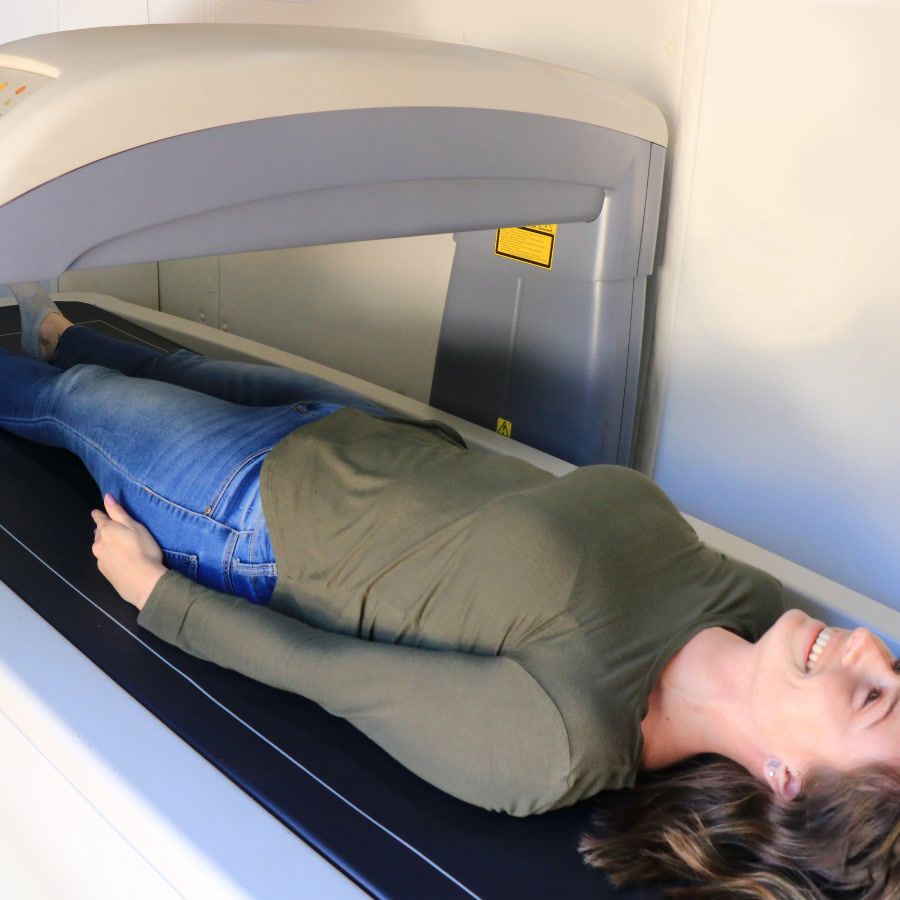The InBody Scan

InBody scans are an innovative approach to body composition analysis, offering insight into various body components like fat, muscle, and bone. Using cutting-edge technology, these scans provide a different experience compared to traditional methods like skinfold thickness measurements and bioelectrical impedance. Let's dive into the world of InBody scans, how they work, their accuracy, and how they compare to the gold standard in body composition analysis – DEXA scans.
Get weekly updates.
How Does an InBody Scan Work?
InBody scans employ bioelectrical impedance analysis (BIA) technology, which sends a small electrical current through the body to measure the resistance of different tissues. This resistance is then used to calculate the body's composition, including the amount of fat, muscle, and bone tissue present. However, there's a lot of debate surrounding the accuracy of InBody scans, and whether they provide precise and reliable information about the distribution of body fat, muscle, and bone.
InBody Scan vs. DEXA Scan: The Showdown
If you're considering getting an InBody scan, it's essential to weigh your options and look into the more accurate DEXA scan as well. DEXA scans use harmless low-dose X-rays to measure body composition in just 5-7 minutes. They're the gold standard for athletes and medical professionals due to their high accuracy and precision. DEXA scans measure fat, muscle, and bone in the body non-invasively and quickly.
So, which one comes out on top: InBody scans or DEXA scans? The general consensus is that DEXA scans are more accurate than InBody scans when measuring body composition. InBody scans can be influenced by various factors that may impact the accuracy of the results.
For those living in Los Angeles, San Francisco, Austin, Dallas, and Seattle, BodySpec is an excellent option for DEXA scans. They use state-of-the-art technology, and their experts are highly trained. BodySpec provides detailed and easy-to-understand reports, so you can see your results and know what they mean. They also offer other body composition analysis services and coaching.
To summarize, InBody scans utilize bioelectrical impedance analysis (BIA) technology to measure body composition, including fat, muscle, and bone tissue. While InBody scans offer a different approach to body composition analysis, their accuracy is subject to debate. On the other hand, DEXA scans are considered the gold standard for body composition measurement due to their high accuracy, precision, and non-invasive nature.
If you're looking to assess your body composition, it's important to consider the most accurate and reliable method available. DEXA scans are generally considered more accurate than InBody scans, and facilities like BodySpec offer these services using advanced technology and highly trained professionals. By understanding your body composition, you can make more informed decisions about your health and fitness journey.
Citations:
Kyle, U. G., Bosaeus, I., De Lorenzo, A. D., Deurenberg, P., Elia, M., Gómez, J. M., Heitmann, B. L., Kent-Smith, L., Melchior, J. C., Pirlich, M., Scharfetter, H., Schols, A. M., & Pichard, C. (2004). Bioelectrical impedance analysis—part I: review of principles and methods. Clinical Nutrition, 23(5), 1226-1243. https://www.sciencedirect.com/science/article/abs/pii/S0261561404001336
Rothney, M. P., Brychta, R. J., Schaefer, E. V., Chen, K. Y., & Skarulis, M. C. (2009). Body composition measured by dual-energy X-ray absorptiometry half-body scans in obese adults. Obesity, 17(6), 1281-1286. https://onlinelibrary.wiley.com/doi/abs/10.1038/oby.2008.676
Nana, A., Slater, G. J., Stewart, A. D., & Burke, L. M. (2015). Methodology review: using dual-energy X-ray absorptiometry (DXA) for the assessment of body composition in athletes and active people. International Journal of Sport Nutrition and Exercise Metabolism, 25(2), 198-215. https://journals.humankinetics.org/doi/abs/10.1123/ijsnem.2013-0228
Ling, C. H., de Craen, A. J., Slagboom, P. E., Gunn, D. A., Stokkel, M. P., Westendorp, R. G., & Maier, A. B. (2011). Accuracy of direct segmental multi-frequency bioimpedance analysis in the assessment of total body and segmental body composition in middle-aged adult population. Clinical Nutrition, 30(5), 610-615. https://www.sciencedirect.com/science/article/abs/pii/S0261561411000076
Van Loan, M. D., Mayclin, P. L., & Johnson, H. L. (1995). Use of bioimpedance spectroscopy to determine extracellular fluid, intracellular fluid, total body water, and fat-free mass. Basic Life Sciences, 60, 67-70. https://pubmed.ncbi.nlm.nih.gov/8827651/


